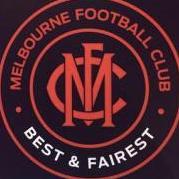Grapeviney
Moderators
-
Joined
-
Last visited
-
Currently
Viewing Forum: Demonland
-
AFLW: PF vs North Melbourne
- Robbie Flower
I’m with @Fork 'em - Pendles is all silk, but the grace and elegance with which Flower moved and played was in a class of its own. There’s no modern equivalent and no need to search for one. He was so good that many of the highlights videos on here and YT weren’t even compiled by a Dees fan; they were painstakingly and lovingly put together over a long period of time by a Bomber supporter - the legendary @Ash35.- Robbie Flower
He played 269 games without seeing September action - and then booted 5 goals in his first final, followed by 4 the week after. The goal at the 1.50 mark of this highlights clip is one of the all-time greats.- Who Will Be Our Next Coach?
The Herald Sun think it's enough of a story to be reporting her news of his meeting today. And the job does exist, in the same way that a whole lot of other people are already employed by this club that isn't yet a club. They need to keep building the architecture of the whole thing in the event it does get up. And don't be fooled into thinking the fate of the Devils rests with the Tassie Parliament. The AFL hold all the cards, and can alter the stadium deal at any time to make it palatable down there. They're sticking to their guns for the moment, but will know internally about their own willingness to bend further down the track to get it over line .. ie whether a job for Bucks will actually be there.- Who Will Be Our Next Coach?
The opposite is true. She's been a thorn in the AFL's side throughout her career, more than any other footy journalist by a country mile. If you believe otherwise you haven't been paying attention the past 40 years. And if the AFL want Buckley to coach Tassie they'll do whatever is required to make it happen. They don;t need to run a publicity campaign through the media to convince either the fans or Bucks. The whole idea is kind of absurd - "let's get one of the most hated journalists in the game to persuade everyone".- From the vault
Found this while cleaning up today. He was always so polite and friendly when you went into the store, happy to talk footy and sign an autograph.- The Soccer thread
Long may it continue. City never looked threatening, and my trepidation about a possible trouncing quickly turned into a relaxing and enjoyable watch! COYS !!- Sharing My Ongoing Cancer Experience
Love those images Tim .. hope the news gets better after this setback and you can make your gig.- Goalkicking
Was doing a bit of digging on accuracy (it's hard to find data) and 12.12 is the most common score in VFL / AFL history, which is consistent with the numbers below. From a low of 38% when the game began, accuracy steadily improved over the decades before hitting its peak of 56% in 2000, which is about the time players became full-time professionals. But things have declined since then, back to 51% in 2020, and as low as 49.1% last month (thanks to us, in part), which may or may not be related to things like fatigue and the much heavier workload of the modern player. A few other numbers to mull over: 1987 - 1999: 52.4% 2000 - 2010: 53.7% 2011 - 2020: 52.8%- Congratulations Garry Lyon - Inducted into AFL Hall of Fame.
Not sure about the Bears / Lions, but Swooper threw him into the middle in the last against Essendon at Windy Hill in 1990, and he and Darren Bennett won us the game, turning a 34-point deficit halfway through the final quarter into an 8 point win. We kicked seven goals in 17 minutes! A truly famous victory.- Congratulations Daisy Pearce - Inducted into AFL Hall of Fame.
A giant of the game and the club, and one of our finest ambassadors. Her story isn't finished yet. I hope she becomes the first female coach in the men's game, and goes on to win a flag - with us. ❤️💙🏆💙❤️- Nyirripi x Demons t-shirt
The club advertised these awesome t-shirts on the weekend as only being available at the ground in Alice on the day. But it seems the leftovers are now on sale online. Love the old-style Demon mascot! https://www.houseofdarwin.com/products/demons-x-nyirripi-tee- The Soccer thread
Absolutely rapt for Ange, and glad that Harry Kane got a cup too. No-one at Spurs deserved silverware more.- Welcome to Demonland: Harvey Langford
Just torched the Dons and helped Collingwood to 3 goals in a few minutes with the game on the line in the 3rd. In the wet. He’s no Jack Viney but he doesn’t need to be; he’s pure silk and wins more than enough of his own ball. People who equate his slight frame with a soft attitude are mistaken. Those who criticise him for not taking enough contested marks - lol.- Sharing My Ongoing Cancer Experience
I’m all gigged out, I’m afraid, although music is still very central to my life. But it’s at home these days. - Robbie Flower










